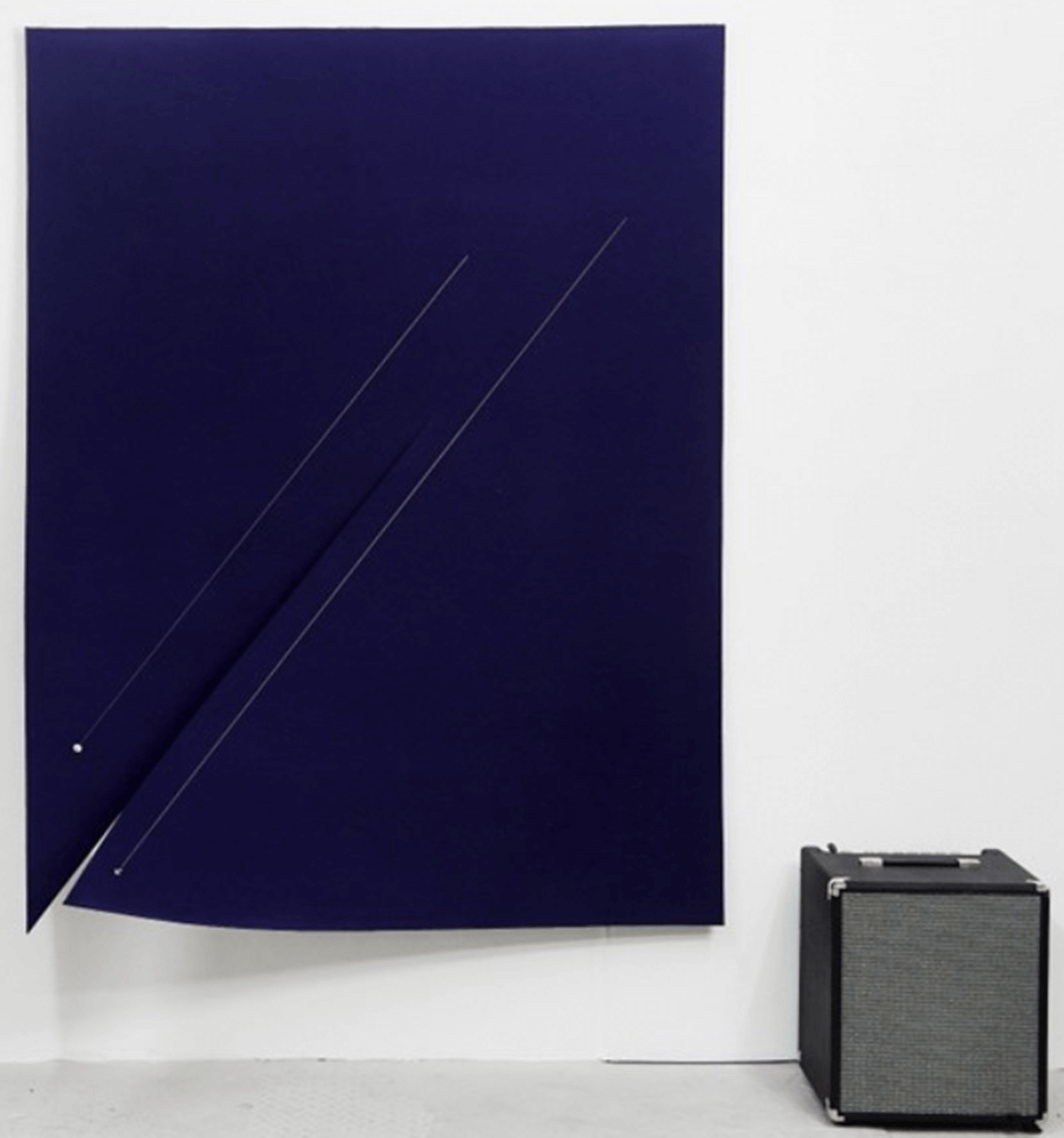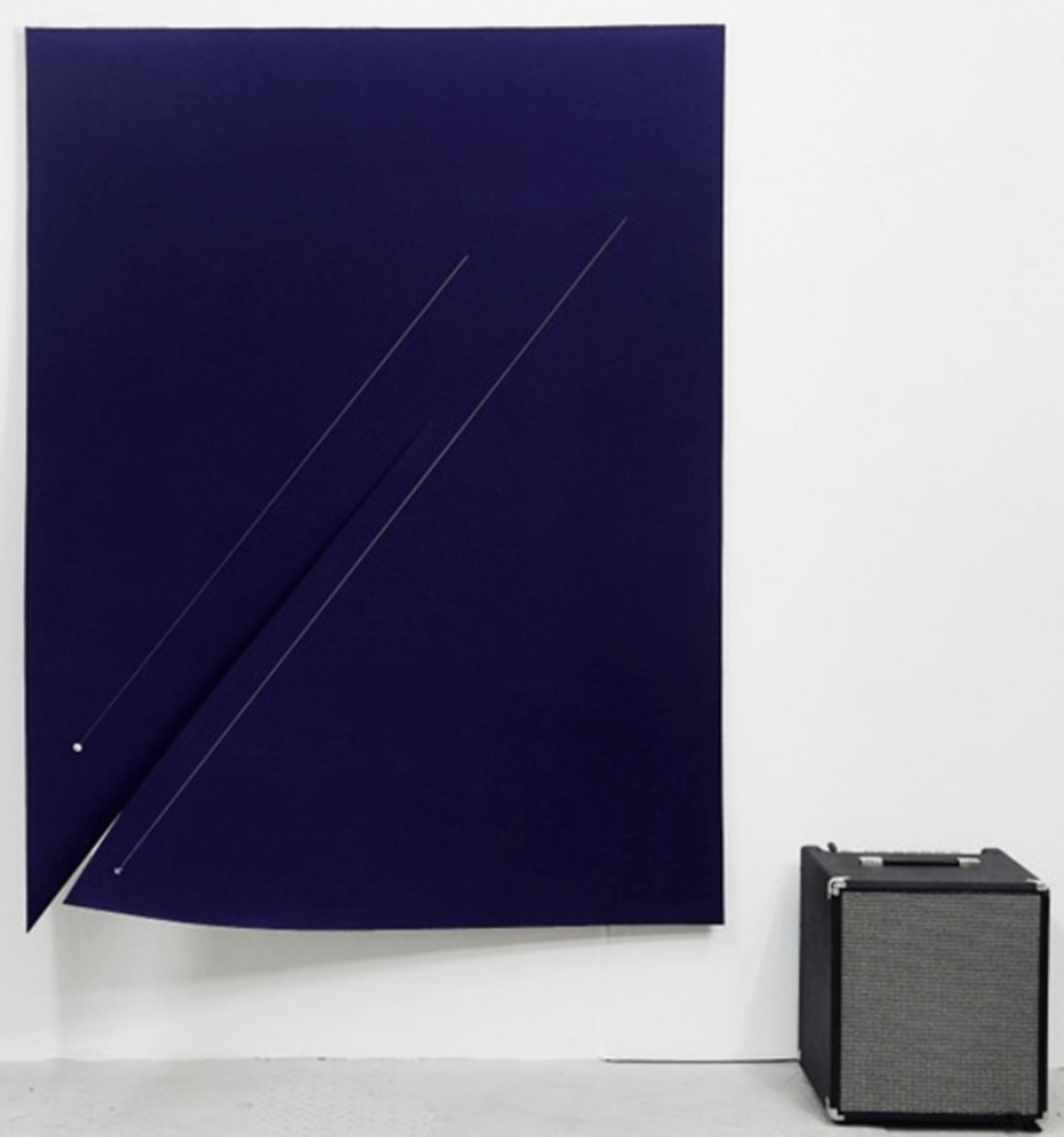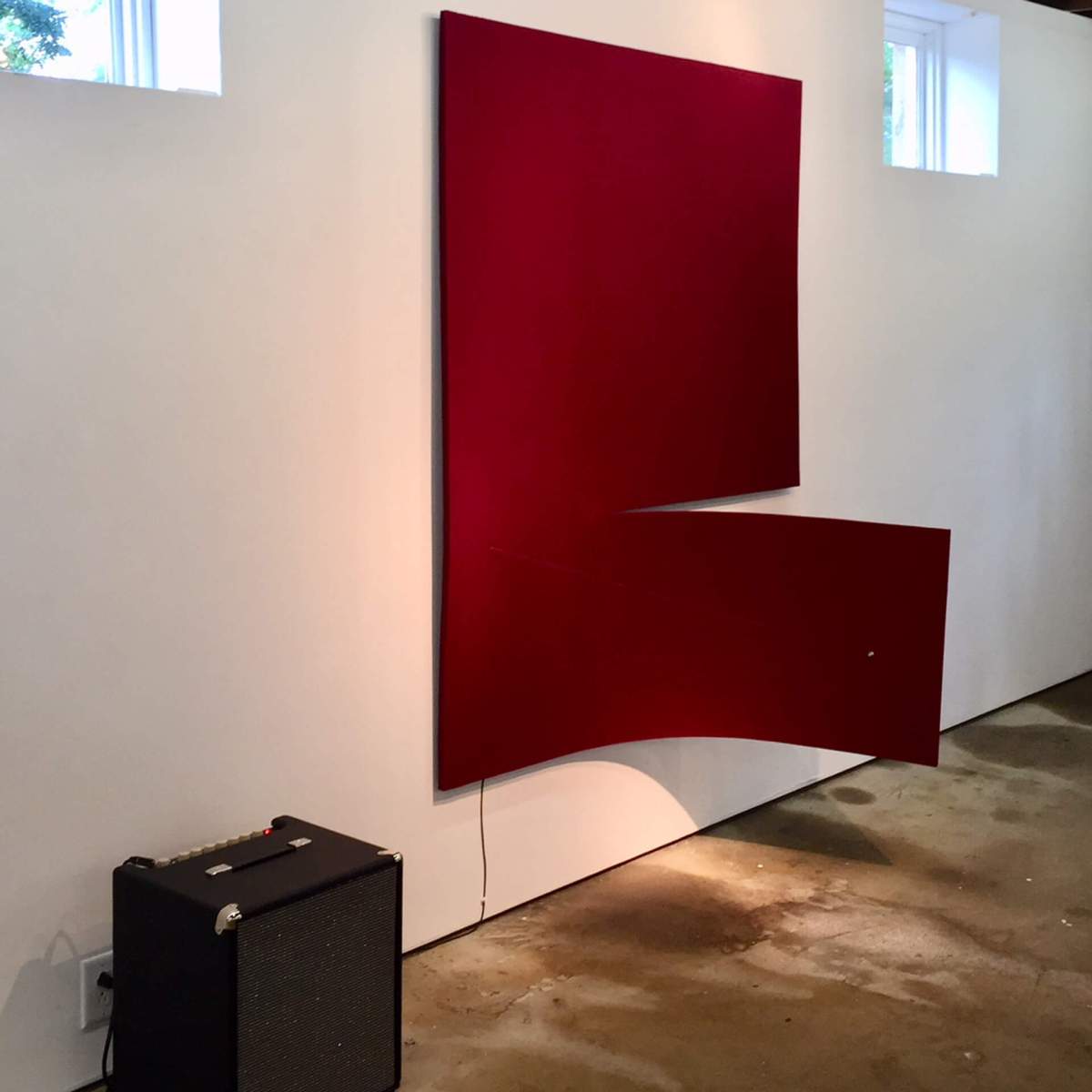Former Punk Rocker Amplifies Senses With Artwork

The Fireplace Project, a contemporary art gallery and project space in Springs, presents its second installation of the 2018 season, a solo exhibit of Israeli native, Naama Tsabar, “Transboundary #2,” going on through Sunday, August 5.
A former performer in an all-girl punk band in Tel Aviv, her sensory driven installations examine gender roles and sensuality in music and nightlife. Tsabar aims to redefine the conventional terms of masculinity and femininity.
How did Israeli culture influence you as an artist?
I grew up 20 minutes south of Tel Aviv, in the center of Israel. I think we’re all informed by the places we grew up in on different levels. For me, there’s a lot of sensuality and a lot of direct communication. It exists in my work where it’s not a metaphor for something other than itself. It’s literal.
When you touch it, it’s very much defined through its response. There’s that sort of quality in Israel, a direct response to things. It’s a very specific political climate and some of my work touches on that, in the undertones.
What is the difference between rock’s influence in America vs other parts of the world?
The history of rock has reactions to a political moment. Within that, each country would have a different agenda in their songs. Music is still like any artistic creation, reactive to the place that it’s in. Back then, especially with vinyl, everything traveled slower and then growing took time.
Nowadays, with the internet, the way information travels, the differences in worldwide music is getting smaller and smaller. The lines between influences aren’t about borders of countries anymore; there’s access.
Who influenced you growing up?
Women’s voices influenced me. It’s a strong moment when a woman has a voice and puts it out there. The struggle to do that is greater. History is more in tune to male voices. PJ Harvey, Patti Smith; the late-1980s, early ’90s were the formative years for me.
Tell us about your punk band. What did you play/sing, where did you perform?
In the early 2000s, my punk band was called Akita, named after a Japanese dog that couldn’t be trained but remained loyal to its owners. So, we chose a band of all women and it was an electro punk band, half computerized and half live music. I was the live instrument, I played the electric guitar and did back-up vocals.
We mostly performed in bars and clubs and venues in Tel Aviv, which has a lively night scene — lot of small venues, late at night. It formed the experience of having people watch me on stage. It was sweaty and super hot, the middle of summer in Israel. It was a super sensual experience. It definitely seeped into my work and understanding of body and viewer, performance and instrument, that I now put into practice.
What makes your show interactive?
A lot of my work has interactive qualities, where you can enjoy them for their visual factor. If you choose, you can also activate them. I think that’s important, when you have the possibility to touch the art, which is something we’re taught not to do. When you touch the art, it responds with sound.
There’s a different relationship with the object and your body, as a viewer, that is much more the way we experience life and sensuality. A lot of my work has this kind of component, and all the works in the show have that nature.
Are their traits that you would say are strictly masculine and feminine? Or are the lines blurred?
I think each and every human is both masculine and feminine, to different degrees. I don’t think making music of a certain kind is gender specific but history has been written mostly by men, which is why rock and roll is considered masculine.
The breaking of a guitar is associated with rock and roll. How do you incorporate that message into your work?
The new body of work of mine is called “Melody of Certain Damage.” I buy [guitars]; I don’t play them I just tune them and then break them. The breaking of the guitar, rather than it being a performative climactic act, as seen in history, is like a sculpture act in the studio — it’s private.
The way it scatters on the floor is how I map it out, a chance factor in the way the pieces go and scatter. At that point, I work with what I have. I fix them to the floor and reinsert the guitar pieces into a working order by putting [on] new sets of piano or guitar strings.
Provide an example of one of your sensory driven installations.
There’s something about interactivity and introducing another sense into the factor, not just the eyes, rather you can touch. There’s an extremely sensual interaction between the viewer’s body and the object. When you cross that line, it becomes sensual and so it works on the hearing, touch, and the eyes. You’re much more immersed in the work when you cross the border and activate it.
Is there an underlying message behind your work?
There isn’t one message I’m trying to convey. Our existence is very complicated. I’m very much interested in the talk about gender and the place of the object in a gender’s history. Thinking about how we can rethink things.
Sometimes, there’s a need for humans to erase in order to build, but for me, it’s interesting to look at what’s already there and rethink it. As I rethink it, I’m interested in turning it into a new history. In my art practice, when I perform, I work with predominantly female identifying musicians or gender nonconforming musicians.
The idea is to put these instruments into the hands of people that have not been written into history, and the history of these objects will be written into the hands of female musicians. That’s on my mind, in my practice, right now.
The Fireplace Project is located at 851 Springs Fireplace Road, East Hampton, across from the Pollock-Krasner house. It is open Saturdays and Sundays, 12 to 6 PM and by appointment. For more information, email edsel@thefireplaceproject.com. Find Naama at www.naamatsabar.com.






